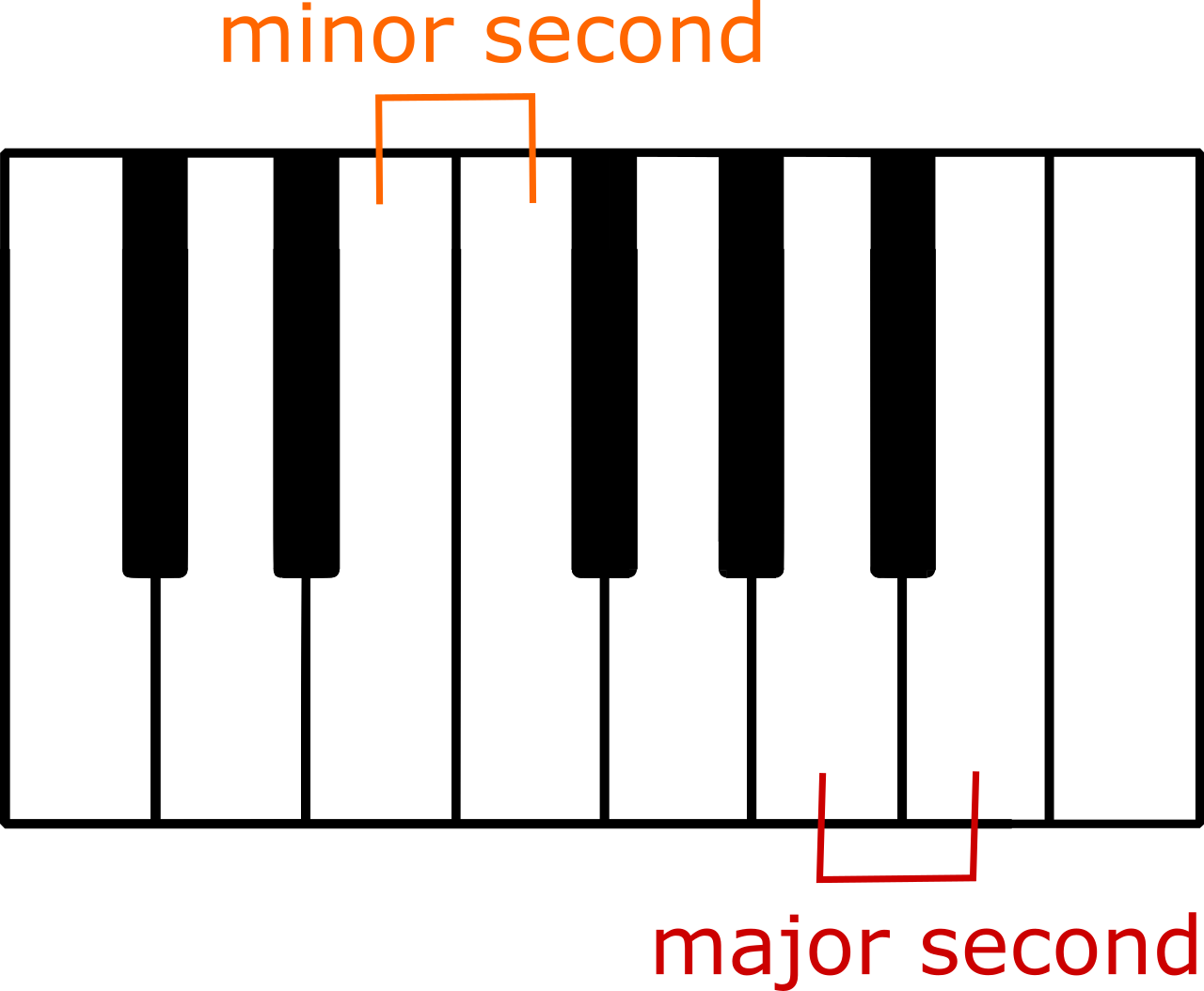Second
In a stave system
Two notes on a neighbouring line and space form a second. Depending on where the second is located, it can be a minor second (m2) or major second (M2).

On a keyboard
If there are no other keys between the two marked ones it is a minor second. If there is one other key (black or white) between the two notes it is a major second.

Examples
Beethoven's For Elise

Happy Birthday

The Beatles' Yesterday

The second in a C-Major scale
In a C-Major scale all neighbouring notes are seconds. In the image below the minor seconds are connected with two lines.
